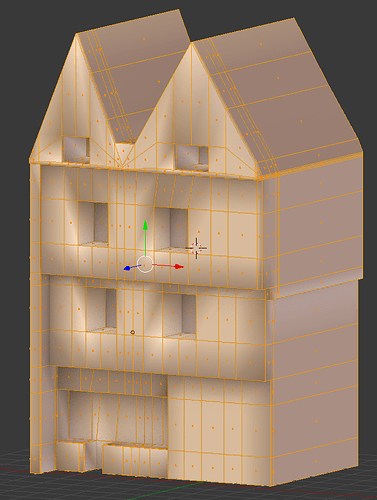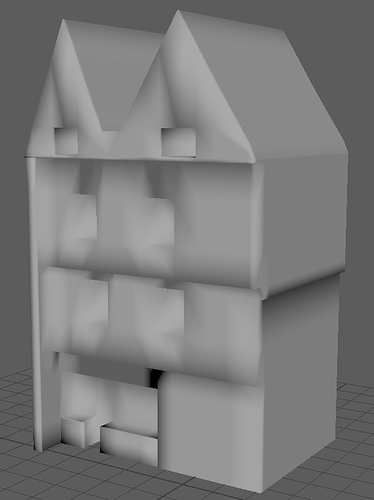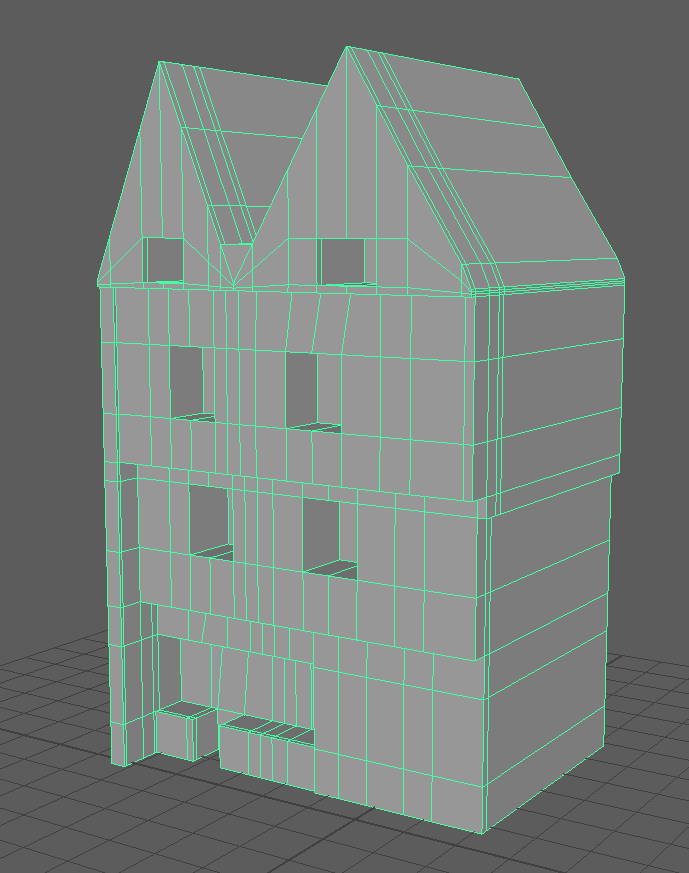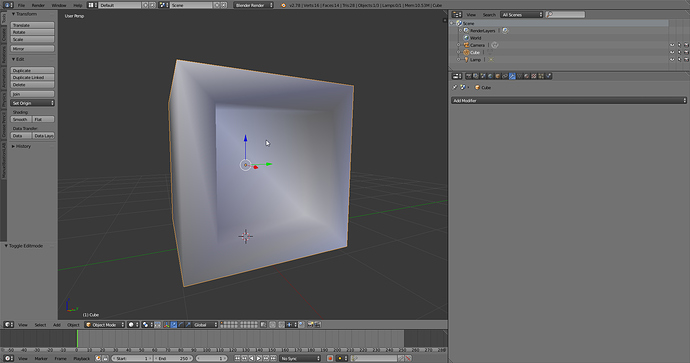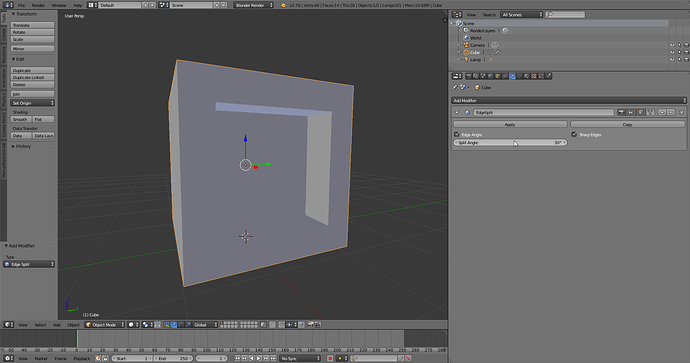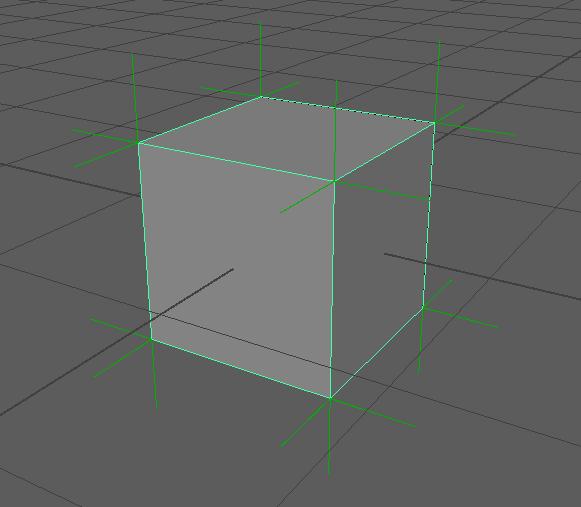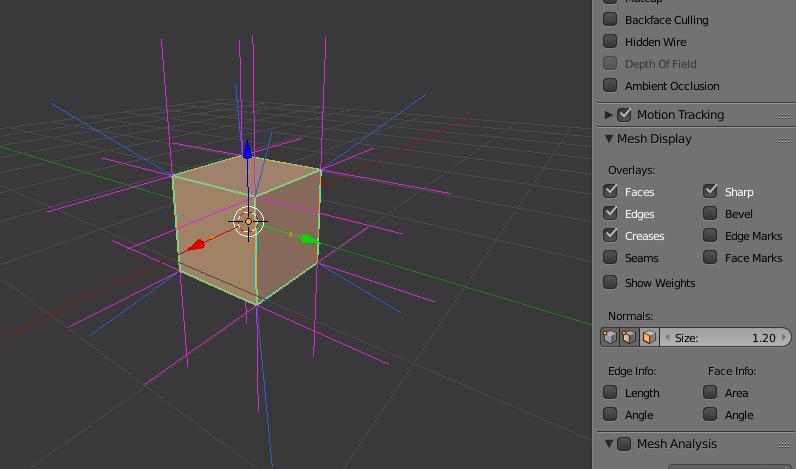Hey there, thanks for the replies. Sorry, I was stuck on another project for a few days.
I’ve been doing a bit of research as to what Maya is doing with its normals when I use “set to face”. This may all be obvious to others, but I am learning it for the first time here.
Apparently, vertices can have more than one normal (one per face that it is attached to). When I create a cube in Maya, each vertex gets three normals, and each of these normals points in the same direction as its face normal. This is also what is done when I run “set to face”. It “unlocks” the vertex normals from each other (so they don’t all point in the same direction) and then resets them to point in the same direction as their face normal (for the face they are attached to). If there are three attached faces, you get three normals. If you have 7 attached faces, you get 7 separate normals.
If I create a cube in Maya, it automatically gets these separated normals. It looks like this:
If I export this as an OBJ, and then open it in Blender I can see this by going into edit mode, and making sure that the Normals are on and showing: Display vertex-per-face normals as lines (purple lines in the following screen shot) AND Auto Smooth is turned on in the Data panel (they don’t display if Auto Smooth is off, and the shading gets weird again - kind of polar opposite of geo created directly in Blender).
And if I edit the OBJ file, I can see that I have 8 vertex points and 24 vertex normal entries.
If I export this cube (originally from Maya) from Blender as an OBJ and then open that file in a text editor, the vertex normals will have been collapsed into a single normal per vertex (but Maya seems to open it just fine and still show per-face-vertex normals - don’t know why - Blender also is able to re-import this OBJ and still know that it has per-face-vertex normals. Which is confusing…).
But if I then export this cube from Blender as an Alembic, I get some weird normals (as seen in Maya when I open it up):
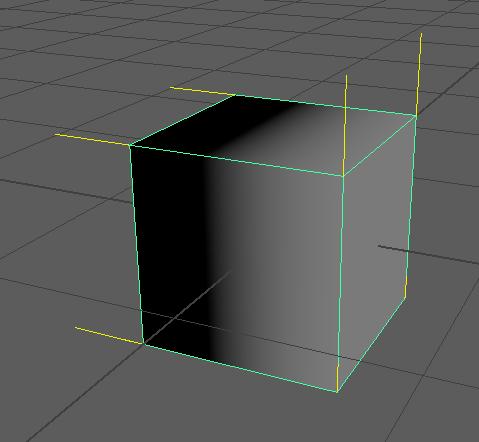
When I open this same Alembic back up in Blender, it comes in with odd shading, no per-face-vertex normals, but just averaged vertex normals.
If I create the cube in Maya (with its per-face-vertex normals) and save it as an alembic, and then import it into Blender, I still have the odd shading, and just a single, averaged vertex normal per vertex.
If I export the cube from Blender as an alembic, but I turn off “Normals” and then open it up in Maya, I get averaged normals (like I would see in blender) but at least they are not broken like in the image above.
So my theory is this: The Blender alembic exporter cannot handle per-face-vertex normals. If I have “Normals” turned on it just exports some very broken normals. If I leave them off, then Maya recalculates them as averaged normals (i.e. rebuilds them by averaging the normals of the adjoining faces). I still don’t know how I would generate per-face-vertex normals in Blender, but I don’t think that I would be able to export them as an Alembic anyway.
So for now I will stick to using Maya as an intermediate.
*I suppose the edge split modifier would work, but since it actually breaks the model up into individual, disconnected faces, it feels a little heavy handed. For a building it probably doesn’t make a difference. But I don’t like the idea of having models that have duplicate verts… we’ll see.
Thanks for the responses though!
